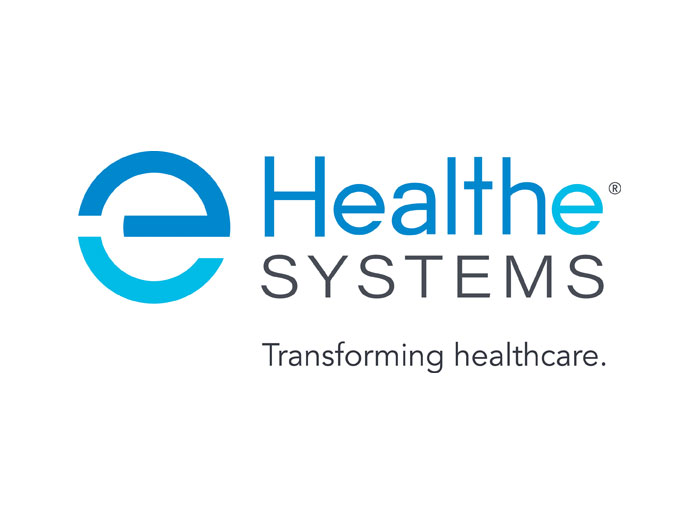Sponsored Content by Nationwide
How Data and Technology Can Drive Better Underwriting Decisions

Data and technology improvements are key to helping insurers make more informed underwriting decisions across all lines of insurance. This is certainly the case for underwriters in the Financial Institutions (FI) Management and Professional Liability insurance market. With greater access to better quality data, FI underwriters can make more accurate assessments of their risks and therefore provide better terms and prices to their insureds.
Technology is also critical in reaching broader distribution channels. It provides the broker with more valuable data that enables them to find the best solutions for their clients. Digital tools also allow insurers to connect with a wider audience through social media.
However, it hasn’t always been that way. Traditionally, insurers have been notoriously slow to adopt new technology and fully harness their data’s potential.
“We are seeing a shift across the industry towards more capital investment into technology and data solutions to better improve insurance results,” said Ryan Nava, D&O/E&O Financial Institutions Leader at Nationwide Mutual Insurance Company. “That is certainly the case here at Nationwide.”
This may be due in part to the advent of Insuretech, artificial intelligence and other technological advances in the insurance marketplace. Insurance companies are now much better equipped to collect, mine and analyze their data. The ability to quickly and efficiently spot key patterns and trends between underwriting and claims enables them to leverage this data to provide the best end product or service to the customer.
Data in Action

Ryan Nava, D&O/E&O Financial Institutions Leader, Nationwide Mutual Insurance Company
Having successfully built its financial institutions book of business from scratch over the last 14 years, Nationwide is one such beneficiary of this rich data source and technological innovation.
“Having a clear picture of trends enables underwriting, claims and account management teams to work seamlessly and effectively together towards the best risk transfer solution for our customers,” said Nava. “Ultimately, this allows us to make better informed decisions on the underwriting side.”
By benchmarking this data, Nationwide has been able to accurately compare different accounts in terms of pricing, terms and conditions, and a range of limits to ensure they are providing their insureds with the best and most relevant solution and price. Through their new underwriting system, they also have access to higher quality and integrity of historical loss data, allowing them to more accurately assess and price their risks.
How Insurers Can Differentiate Themselves
New technology has also led to a better link between underwriters, their distribution partners and their insureds. Social media platforms, such as LinkedIn, have allowed for better and more efficient means for insurers to get the word out about their current and new products, as well as information on relevant market trends. These platforms have helped companies reach a wider distribution network, including younger generations of customers, via blog posts and white papers.
The management and professional insurance industry is nearing the tail end of a hard market. This market has seen about 20 new entrants come into the fold over the past two years, as is typical for hard markets in this space. These new markets hope to capitalize on the increased rates and hope to fill the capacity void left when legacy insurance companies cut limits on towers of insurance.
This part of the insurance market is largely a relationship business, and, to that end, insurers need to invest time and energy into developing these relationships with their distribution partners and clients to differentiate themselves. The COVID-19 pandemic has made this effort more difficult for these new entrants.
“The last hard market we saw in this space was during the credit crisis where insurers were dramatically cutting limits. This presented an opportunity for new entrants, including Nationwide, to provide much-needed capacity,” said Nava. “We haven’t seen the same capacity reduction on towers this time around, so I believe there is less opportunity for these new entrants to participate on these insurance towers. Also, the inability for them to build face-to-face relationships due to COVID-19 has only made this more challenging.”
Market Trends
From a macroeconomic perspective, the continued uncertainty around the crisis and the widespread supply chain disruption it has caused has impacted company earnings across the board, from banking and private equity to commercial sectors. However, insurers have responded supportively.
“Despite all this, the insurance industry has fared as well as could be expected, even without specific communicable disease exclusions,” said Nava. “There’s still some lingering concerns with the COVID-19 pandemic, but with new entrants in the marketplace, prices are beginning to stabilize.”
One of the more recent exposures facing financial institutions is social engineering and the untold reputational damage it could cause if a breach should occur. This is a concern for almost all companies, particularly for smaller entities such as local and regional banks if they were to suffer a loss.
To ensure they are protected against phishing attacks of this nature, companies need to implement ongoing employee education campaigns. They must also invest in the appropriate cybersecurity protection while making sure they adhere to the latest regulations.
Another key trend in the financial institutions space is the exponential growth of special purpose acquisition companies (SPACs) in recent years. This has attracted far greater regulatory scrutiny, with the Securities and Exchange Commission clamping down on potentially misleading earnings projections by sponsors and more closely investigating how SPACs are treating their warrants, either as assets or liabilities.
“We’ve already seen an uptick in SPAC-related claims,” said Nava. “De-SPACs have a similar potential for claims with plaintiffs’ bars going after more securities class-action lawsuits.”
Employment practices is another area of concern. As employers require staff to return to the workplace and/or be vaccinated, the potential for employment practices liability litigation will increase. If the courts side with employees, the implications could produce a rise in frequency and severity in this area.
Then there are key decisions to be made on economic policy around interest rates and the Federal funds rate. If the cost of borrowing starts to rise again, it can have a profound effect on the financial institutions industry.
Opportunities in the Financial Institutions Space
Despite these challenges, the market presents ample opportunities.
These include working through terms and conditions and cross-selling other management and professional liability lines. To help navigate these challenges and find the best risk transfer solution, it’s vital to work with an insurer that knows the financial institutions market inside-out and understands client needs. That’s where Nationwide can help.
Nationwide’s financial institutions leadership has 25 years of cumulative underwriting experience covering multiple classes of business, from banks and insurers to investment advisers, mutual funds, hedge funds, private equity firms and real estate investment trusts. Nationwide provides a range of primary liability products, including Directors and Officers (D&O), Professional Liability (E&O), Private and Mutual Fund, Employment Practices, Fidelity and Fiduciary Liability.
Nationwide also offers Bankers and Insurance Company Professional Liability and Independent Director Liability products. The company provides limits of up to $25 million for primary and excess coverage, $10 million for hedge funds and $15 million for Network Security and Privacy Liability.
To learn more, visit: https://mls.nationwideexcessandsurplus.com/fs/products/financial-institution-liability/.
About Nationwide
AM Best Rated A+ XV | S&P A+ | Fortune 100 Company
Products underwritten by Nationwide Mutual Insurance Company and Affiliated Companies. Not all Nationwide affiliated companies are mutual companies, and not all Nationwide members are insured by a mutual company. Home Office: One Nationwide Plaza, Columbus, OH. Nationwide, the Nationwide N and Eagle, and other marks displayed on this page are service marks of Nationwide Mutual Insurance Company, unless otherwise disclosed. © 2021 Nationwide Mutual Insurance Company.
This article was produced by the R&I Brand Studio, a unit of the advertising department of Risk & Insurance, in collaboration with Nationwide. The editorial staff of Risk & Insurance had no role in its preparation.










